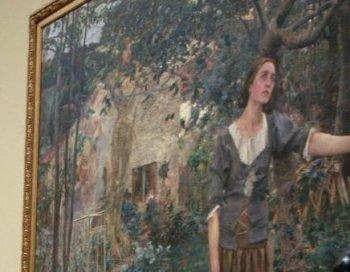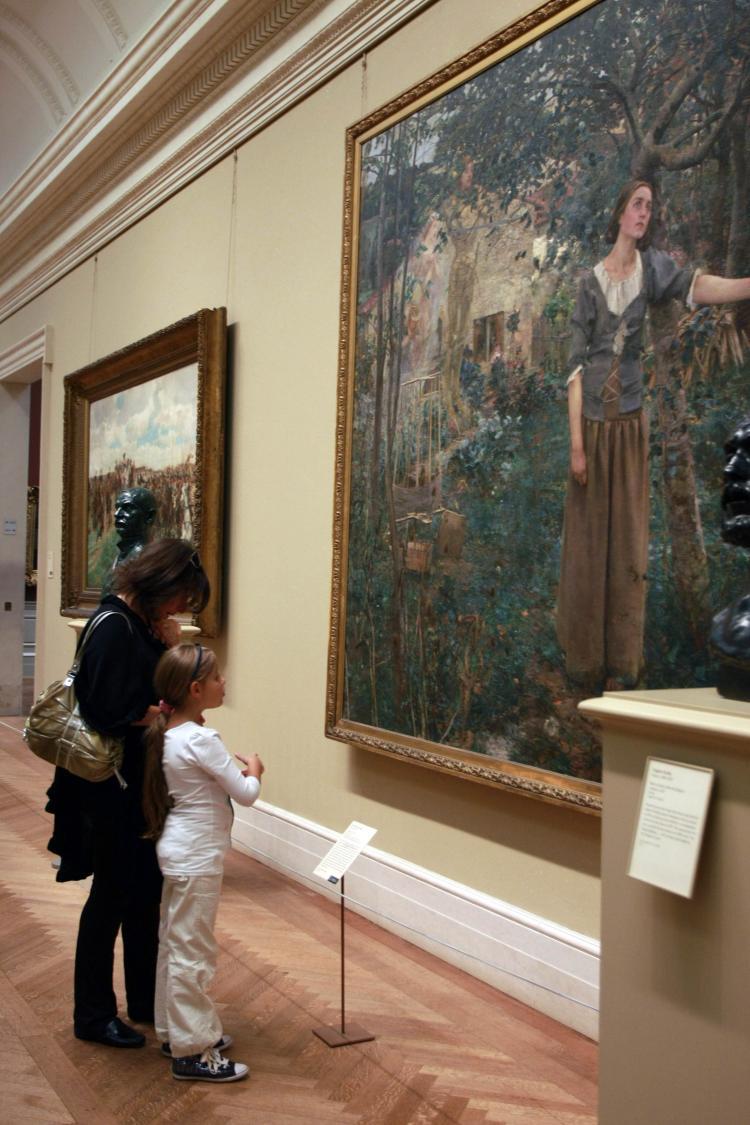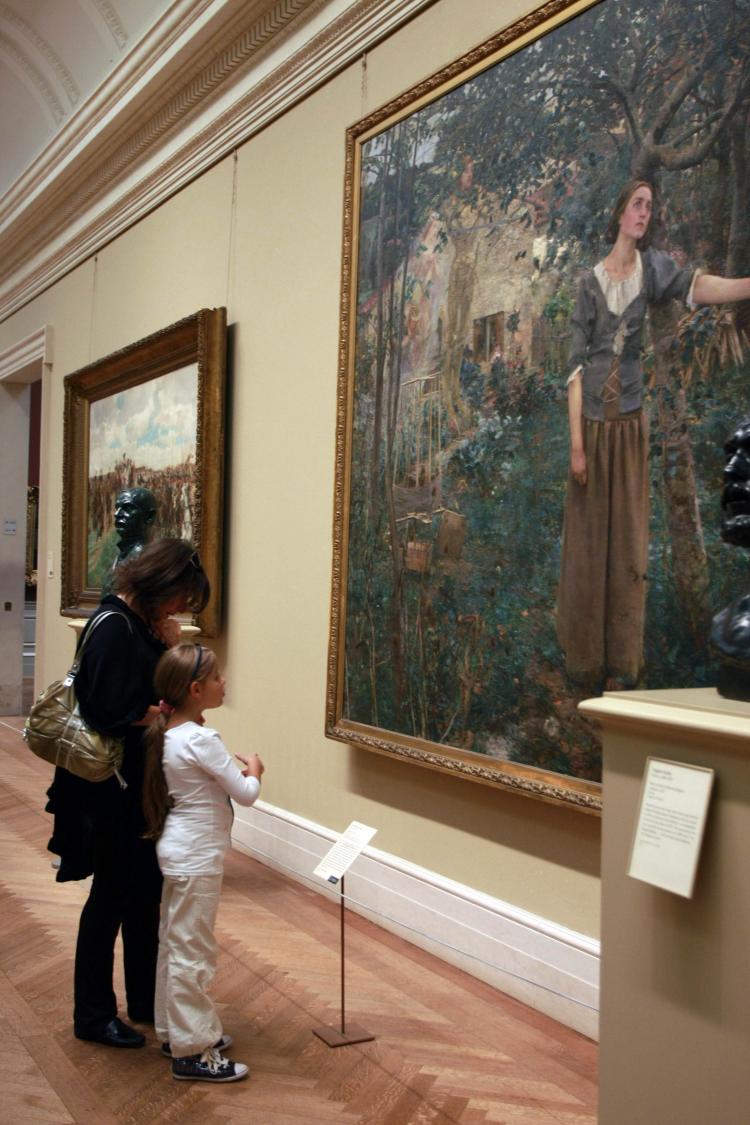Most Mondays, the Metropolitan Museum of Art is closed. Most Mondays, the majority of Manhattan is either buzzing from one meeting to another, or sitting in an office. Columbus Day is a day to reflect upon American history. It is also, incidentally, a day of freedom from the workweek grind and a rare opportunity to pass through the Met doors on a Monday.
Some New Yorkers visited the city’s epic epicenter of art and art history to explore a Columbus-inspired theme like Italian art or naval displays, according to Met staff. But most came to enjoy the special exhibitions they don’t usually have time for on the weekend.
Many went to an exhibition featuring Khublai Kahn, the grandson of Genghis Kahn and ruler of a Mongolian empire that united many different cultures, faiths, and artistic styles. The Mongolian Empire and the Metropolitan Museum have this unifying effect in common—and so does America for that matter.
American history started with a predominantly European heritage and flourished into a mixed cultural collage. The Met attracts visitors of all races, ages, professions and walks of life to view beautiful moments in the collective human memory—not just memory, that can be found in history books—the collective human heart.
The walk from the main entrance to the Khublai Kahn exhibit takes the viewer through ancient Greece and Egypt, 19th century Europe, and modern America. Periods of light, balance, harmony, and reason are punctuated with chaotic outbursts of confusion and darkness.
A stop in the restrooms before embarking on day’s exploration takes one past images of real Egyptian people. Brush strokes made by an artist’s hand thousands of years ago, likenesses of people just like us who walked the earth so long ago.
An elderly man gazes with wonder at the ornate trinkets used by pharaohs and their harems. A group of children skip excitedly by, chattering about the mummies and filling out activity sheets. A mother lines up her children in front of an ancient stone lion, “Okay, line-up, now, line-up. Sam! Come on over here—line up, but don’t touch it! I said don’t touch it!”
The restroom stop out of the way, the journey to 14th century Mongolia—the Kahn exhibit—continues. Nineteenth century French paintings transport one into moments long gone, but not forgotten. A young couple stands on the straw-covered ground before a stable and drinks milk from a pail. A moment from a simpler time.
In another painting, a woman and her child in a museum, inviting the viewer to compare this scene with the one in which they themselves stand. Eugene-Louis Lami’s “Interior of a Museum” displays a homey and cluttered space, different from the environment at the Met, yet one feels a connection with the figures in the painting.
Next are a few modern photos—a distorted human figure, Jackson Pollock splashing a canvas. After the French paintings, the disharmony of these images is jarring, but short-lived. A peaceful balance is restored as the Greek sculpture court opens up to the right. The spectator looks down from a balcony on the well-lit room, full of grace and brilliance.
As one proceeds, a room to the right displays contemporary photography. Electronic break-beat music provides an atmosphere at odds with the sophistication usually associated with the museum.
A giant Thomas Struth photo at the entrance again invites the viewer to contemplate his or her position as spectator. Struth photographed people in museums throughout the 1990s. This photo shows spectators in a museum in Japan viewing a 19th century French painting by Delacroix, “Liberty Leading the People.” The painting is displayed as though on screen at a movie theater.
A little further along, more 19th century paintings, now accompanied by sculpture of the same era embody a struggle between harmony and classicism and disturbing dissonance. An abstract image of a dark, ghostly bride hangs alongside paintings of rosy young maidens.
Classical Chinese melodies herald the beginning of the Khublai Kahn exhibition. We’ve arrived in 14th century Mongolia. Khublai founded the Yuan dynasty in China, which united the south and north in China, generating new artistic styles. Images of buddhas and bodhisattvas have faded in color with time, but retain the elegance and tranquility of heavenly scenes.
A trip to the museum is not at the top of everyone’s weekend to-do list, but many made it out on this holiday. An Asian exhibition at the Met may not appear at first glance to be relevant to Columbus Day. It does, however, bring one through the memories of our European ancestors, our contemporaries, and humankind as a whole. America’s history is one of many cultures coming together in one place, perfectly exemplified in the Metropolitan Museum’s collection.
Journey Through American and Human Culture
Visitors to New York’s Metropolitan Museum enjoy special exhibits on Columbus Day.

HOLIDAY MONDAY: Visitors enjoy 19th century French art at the Metropolitan Museum of Art on Columbus Day. The Met is only open on select Mondays, including Columbus Day and Dec. 27, the Monday after Christmas. Tara MacIsaac/The Epoch Times
|Updated:






